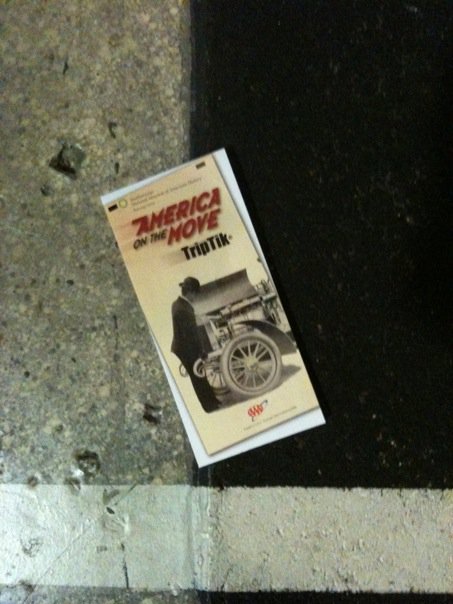 By Brian James
By Brian James
Asphalt has been a major road building material in the United States for decades now. Its influence on the highways and scenic byways can be seen everywhere. It can also been seen anywhere you look at the Smithsonian Institutes’ “America on the Move” exhibit.
In November of 2003, the Smithsonian Institute opened a reworked exhibit of their transportation hall entitled “America on the Move” at the National Museum of American History in Washington, D.C. The exhibit is designed to take visitors back in time and dwell into transportation in the U.S. from 1876 to the present time.
“America on the Move” encompasses everything from railroads, streetcars to the port system in the United States. Contributors to the exhibit included sizable donations from the National Asphalt Pavement Association (NAPA) and ExxonMobil. Since our focus and passion is asphalt, here are a few exhibits where asphalt’s influence can be seen.
Americans adopt the auto
Nothing says freedom like the automobile. By 1930, there were 23 million cars on the road. At this time nearly half of American families owned a car. But in the early days of the automobile a major problem was the condition of the roads. Cities generally had decent roads but rural roads were in terrible condition.
American road building really took off in the 20th century with the increased number of cars on the road. Some of the new roads were private investments, but after 1916 federal law and government funding fueled much of the country’s road building. By 1935 more than one-third of rural roads had been paved, many of these with asphalt, for motor traffic. Within this exhibit visitors are able to see early road building equipment such as road scrapers and early road markers.
Sandy Boulevard: Portland, Oregon 1949
Continuing with American’s love of the automobile, the suburban strip began to surface more and more within the U.S. Beginning in the mid-1920’s and increasing after World War II many businesses started relocating outside of the urban areas into the suburban strips. One of these strips is highlighted in the Sandy Boulevard exhibit of “American on the Move.”
These strips were lined with shops such as car dealerships, supermarkets and large shopping centers that appealed to automobile driving middle-class Americans. The parking lots of these large supermarkets and large shopping centers such as Sandy Boulevard’s Fred Meyer Rose Shopping Center which opened in 1949 highlight the commercial paving end of the asphalt industry.
On the Interstate: I-10
In 1956, Congress passed the Federal-Aid Highway Act. This was the birth of the interstate network in the U.S. The interstate system was designed with over 41,000 miles of road with the intent of reaching every city with a population of more than 100,000 people. Within this act, the federal government was to provide 90 percent of the funding, mostly from gasoline taxes. States would provide the rest of the funding. Our public paving still comes from this process today. A combination of federal and state funding still pay for road work today and keep asphalt moving and contractors paving.
When viewing the exhibit you see how asphalt truly “moves” America.
Brian James is employed by Ponderosa Petroleum Company in Parker, Colorado.